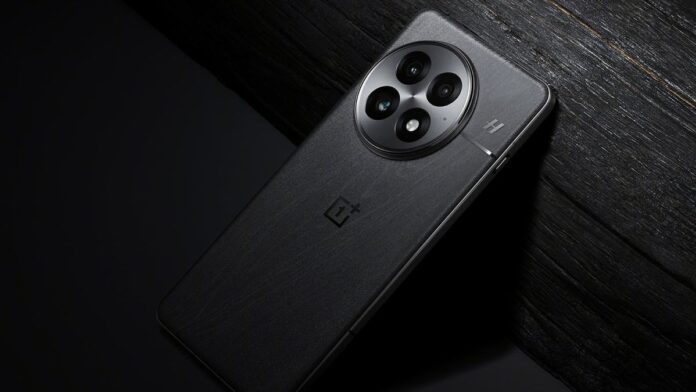OnePlus 13 Intro
It’s been nearly a decade of OnePlus flagships already, and we’ve had some exceptional flagship devices our way. It seems like a recurring theme that the company’s flagships are usually lauded as one of the better “hidden-value” devices out there, which usually punch well above their weight and give most flagships a solid run for the money.
The device was already announced for the mainland Chinese market, but its wider international debut is pending.
What’s new about the OnePlus 13:
- New design with flat sides and a thinner body
- 6.8-inch OLED screen with improved eye protection features
- Local high refresh rate 1-120Hz
- Snapdragon 8 Elite (3nm) and 24GB of RAM
- A large 6,000mAh silicon-carbon battery
- An IP69 water- and dust-resistance (highest available)
Table of Contents:
OnePlus 13 Specs
[Everybody liked that!]
OnePlus phones have always relied on exceptional, top-tier hardware, and in a completely unsurprising development, the OnePlus 13 is yet another spectacular device that boasts a lot of oomph. Here’s a brief rundown of the OnePlus 13 specs based on the model announced for China; have in mind some specs might change in the international model.
| Specs | OnePlus 13 |
|---|---|
| Size and Weight | 162.9 x 76.5 x 8.5 mm, 210gr |
| Display | 6.8-inch 1440p OLED 1-120Hz, 800 nits typical, 4500 nits peak brightness |
| Processor | Snapdragon 8 Elite |
| Software | Android |
| Cameras | 50MP F1.6 main 50MP F2.6 3X telephoto 50MP F2.0 ultrawide |
| Battery Size | 6,000mAh |
| Charging Speeds | 100W wired charge 50W wireless charging |
OnePlus 13 Design and Display
A change of heart for OnePlus
OnePlus phones have always looked pretty smart, centered around a slowly evolving design language that hasn’t been terribly unique, but has always been pretty discernible by phone geeks. It has also remained pretty consistent in the past few years, for better or for worse.
Well, the new OnePlus 13 is here to both carry on with the stylistic tradition but also change it in the process.
OnePlus’ newest flagship now comes with flat sides, finally going after the design trend that has been ruling the smartphone market for the past few years. The company was one of the last holdouts of the slightly curved design language, which gave us sloping backplates and curved front screens for the ultimate ergonomics, but it’s finally time for a fresher look.
That one might have practical benefits as well: a flat side frame allows the company to utilize the inner space in a much more efficient way and could have been one of the reasons for the exceptionally large battery on deck, but more on that later.
Still, there’s an ever-so-slight curve present towards all four sides of the aluminum frame, but for all intents and purposes, the display can be perceived as flat.
The signature OnePlus three-way ring switch is fortunately present here––and that’s simply lovely.

OnePlus 13 color variants look pretty decent!
Taking a closer look at the display of the OnePlus 13, we get a 6.8-inch OLED screen with a QHD+ resolution, HDR+ support, and the same advertised peak brightness of 4,500 nits as the OnePlus 12 (though it most certainly refers to the maximum brightness achievable by a single pixel at full power). It’s the typical brightness that matters, and we seem to have an upgrade from the OnePlus 12: 800 nits vs 600 nits.
The screen is protected by Crystal Shield glass, so no Corning glass here.
OnePlus 13 Camera
Hasselblad goodness
For years now, OnePlus has been partnering with legendary photography powerhouse Hasselblad for the cameras of its flagships. Luckily, it seems that this is still the case with the OnePlus 13 as well, and that’s great news as we’re pretty happy with how OnePlus phones have fared
The OnePlus 13 packs a 1/1.4″ 50MP Sony LYT-808 stacked main camera with optical image stabilization (OIS) to keep shots steady, a 23mm focal length, and a bright f/1.6 aperture which should bring some serious horsepower to the proverbial camera engine.
Next up, we have a 50MP Samsung JN5 ultrawide lens, giving you a 15mm equivalent view with an f/2.0 aperture. Rounding things out is a 50MP Sony LYT-600 telephoto sensor. It’s got OIS, an f/2.6 aperture, and gives you 3X optical zoom to get closer to the action.
Up front, we are greeted by a 32MP selfie camera, neatly tucked in a punch-hole cutout.
OnePlus 13 Performance
Power overwhelming?
We’ve finally reached the era of 3nm chips on Android thanks to the new Snapdragon 8 Elite, which will be powering the OnePlus 13. The new Qualcomm chip is shaping up to be a rather potent powerhouse, which definitely spells great things for the performance prospects of the OnePlus 13.
Frankly said, OnePlus phones have never felt like they were slow or lacking raw performance (actually that has been the case with most flagships for years), but the transition to the 3nm architecture will surely improve things greatly.
One of the possible issues with the 3nm manufacturing node could be excessive heat, which would then quickly lead to throttling, and OnePlus has thought about that in advance. The OnePlus 13 features a huge, 9925mm2 vapor chamber to cope with all the excessive heat and sustain a consistent performance during intensive tasks and gaming.
Aside from the flagship Qualcomm chip, the top-end OnePlus 13 version will also score up to 24GB of LPDDR5X RAM as well as up to a full terabyte of on-board storage. However, more down-to-earth versions with 12GB RAM/256GB storage and 16GB RAM/512GB storage are also available.
Finally, in its unending quest to deliver the most pleasing haptic feedback, OnePlus
OnePlus 13 Software
In terms of software support longevity, last year OnePlus announced it will support its phones for five years, and there’s really no reason to believe this number will go up. Make no mistake, that’s not a bad thing at all––five years is not a short amount of time by any means, it only sounds “bad” as most other Android makers have moved to a seven-year software support window.
Here is a summary of some key features of OxygenOS 15:
- A visual redesign with new icons, while OxygenOS 15’s Shelf widget panel has scored multiple new cards that expand the usability;
- New Split mode that lets you easily switch between the notification drawer and Quick Settings panel;
- New Parallel Processing feature that aims to provide system-wide seamless animation transitions;
- OnePlus Take––A seamless wallpaper transition from your home screen to the always-on display;
- OnePlus Canvas––Boosts multitasking by enabling three-app multitasking, allowing you to switch freely between two apps while keeping their full window sizes;
- Lock screen enhancements (clock color, “glass” textures, blurred wallpapers, depth effects) and home screen customization (“glass” patterns, blurred wallpapers, etc.)
- OnePlus Share––Enables seamless file sharing between OnePlus and iOS devices, sort of cross-platform AirDrop.
And when it comes to AI, OnePlus is jumping off on the bandwagon with a great leap:
- AI Detail & AI Unblur––Use the power of artificial intelligence to automatically sharpen blurred images and enhance low-resolution images with a single click;
- AI Reflection Eraser––Removes unwanted reflections when you shoot through windows;
- Global Search & Circle to Search––Lets you search across apps with natural language processing;
- Pass Scan––This one lets you store boarding passes directly to Google Wallet;
- AI Notes––Uses AI to automatically sort and organize your notes;
- AI Reply––Lets you reply with contextually relevant replies in most chat apps. All of those features will come to the OnePlus 13, but also some previous OnePlus devices, like the OnePlus Open, 12, 12R, 11, 11R and OnePlus 10.
OnePlus 13 Battery
A fundamental change
The most exciting new feature of OnePlus phones, at least for me, has always been the superb battery life and ultrafast charging speeds.
The OnePlus 13 won’t be one to disappoint! The phone comes with a massive 6,000mAh battery inside its thin 8.5mm body, which is an exceptional feat.
How is this possible? Well, OnePlus has utilized the pretty promising lithium-silicon battery technology, which could very well be the battery breakthrough we’ve been waiting for, allowing for increased capacity and superfast charging in a relatively slim package. Hopefully, this will finally enable us to move past the 5,000mAh battery frontier that most Android flagship have rooted themselves into.
OnePlus phones have always had great battery life, and we expect nothing less of the OnePlus 13, but it’s the charging that’s usually the most exciting part. Just like most of its predecessors, the OnePlus 13 supports 100W wired SUPERVOOC charging and 50W AIRVOOC wireless charging.
The latter requires a bespoke wireless charger, but we hope OnePlus continues to supply its superfast wall adapters into the box––they increase the value of the product so much more.
Bigger battery, much faster chipset, and a promising display––all of those new features are more than excellent upgrades to an already pretty decent flagship family, which seemingly never takes a step in the wrong direction.
Things are looking up for OnePlus, which once again might be the hidden ultimate value gem in the Android space, a phone with exceptional hardware, great software, and sadly, the wrong name. The latter will possibly prevent the latter from ever beating the iPhones and Galaxies in the US, which is by now a popularity contest.
We can’t wait to have the OnePlus 13 in our hands and see how it all pans out for the China-based company that has a disdain for settling down.
👇Follow more 👇
👉 bdphone.com
👉 ultraactivation.com
👉 trainingreferral.com
👉 shaplafood.com
👉 bangladeshi.help
👉 www.forexdhaka.com
👉 uncommunication.com
👉 ultra-sim.com
👉 forexdhaka.com
👉 ultrafxfund.com
